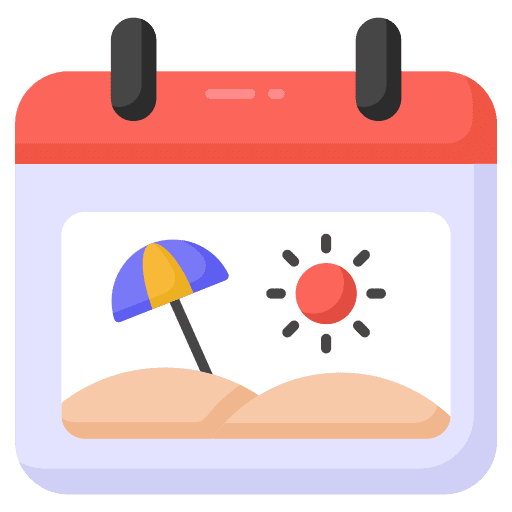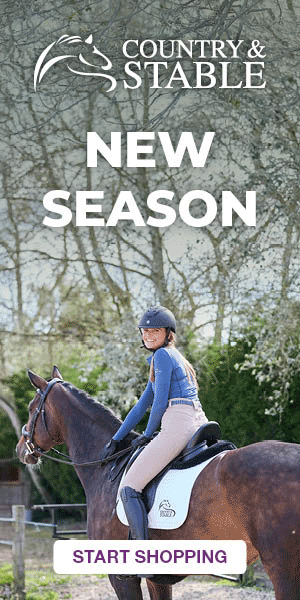Did you know a 500kg horse can drink 50-70 litres of water daily during hot weather? That’s equivalent to four to six buckets!
While keeping horses cool in hot weather is a significant challenge for owners, the consequences of heat stress can be severe. Horses can quickly become dehydrated, lethargic, and reluctant to work in soaring temperatures. Particularly concerning is that heat stress can potentially lead to colic or even collapse.
Horses with pink skin and grey or white hair are especially susceptible to sunburn, making proper sun protection essential during summer months. Additionally, insufficient water intake increases the risk of dehydration and digestive issues like impaction colic.
From maintaining hydration to creating cool environments, providing sun protection to recognising early signs of heat stress – summer horse care requires your careful attention. This guide will help you keep your equine friend comfortable and healthy throughout the year’s hottest days.
Keep Your Horse Hydrated
Water is vital for your horse’s wellbeing, with adequate hydration playing a crucial role in maintaining proper digestion and temperature regulation through sweating.
How much water does a horse need in summer?
In hot weather, horses significantly increase their water consumption. A mature horse at rest typically requires about 5 litres per 100kg of bodyweight daily, but this can dramatically increase with temperature and activity level. For a 500kg horse, consumption could reach 30-50 litres daily under normal conditions but might soar to 120-250 litres during intense heat.
Furthermore, horses in heavy work may need up to 12-15 litres per 100kg of body weight when exercising in hot conditions.
Exercise can increase water requirements by approximately 40% above maintenance levels, and research has shown water intake increases by 79% when horses exercise at high temperatures.
Strenuous activity in summer heat can cause horses to lose up to 15 litres of sweat per hour, making rapid rehydration essential.
Tips for encouraging water intake
Horses sometimes drink less than they should, which increases colic risk. Consequently, monitoring intake is essential. Here are effective ways to encourage drinking:
- Keep water temperature between 45-65°F (approximately 7-18°C)
- Add warm water to cold troughs in winter, as horses drink about 40% more when offered heated water versus near-freezing water
- Provide salt daily (approximately 28g for a 500kg horse)
- Clean buckets and troughs regularly
- Consider offering water with sweet feed flavouring, which research has shown can increase consumption
Using soaked hay and flavouring water
Soaking hay increases moisture content, helping with hydration. For dust reduction, soak for about 30 minutes. In hot weather, limit soaking to 1-3 hours to prevent fermentation, and keep hay out of direct sunlight.
Research from Washington State University revealed that adding sweet feed to water encouraged greater consumption than plain water, whereas apple-flavoured electrolytes actually reduced intake. If flavouring water, always provide a second bucket of plain water.
Other effective flavourings include apple juice, apple cider vinegar, and peppermint extract. However, horses given peppermint-infused water often chose plain water instead.
Electrolyte supplements for horses
Horses lose electrolytes—mainly sodium, chloride, potassium, calcium, and magnesium—through sweat. These minerals maintain proper fluid balance and are vital for muscle function.
After prolonged sweating, it takes several days of electrolyte supplementation to completely replenish losses. For a 500kg horse, approximately 28g of salt (sodium chloride) daily helps replace these essential minerals.
When adding electrolytes to water, always provide plain water alongside. Alternatively, add them to feed with sufficient water. Electrolyte pastes are convenient for competitions but large single doses can temporarily worsen dehydration by drawing water from blood vessels into the gut.
Create a Cool and Safe Environment
Creating a comfortable environment is essential for your horse’s wellbeing as temperatures rise. Proper shelter and strategic management can make a significant difference in keeping your equine companion cool and content.
Providing shade and shelter in turnout areas
Shelter is absolutely vital for horses during summer months. Without access to shade, horses become stressed and may suffer from overheating.
Natural shade from trees provides excellent protection as one side will always be out of direct sunlight. Field shelters offer another effective solution, particularly those that can be repositioned to maximise shade and catch prevailing breezes.
For optimal protection, ensure shelters are large enough to accommodate your entire herd. The British Horse Society recommends a depth of 12ft and width of 10-12ft per horse, with an extra 5ft for each additional animal. Position shelters where horses can see each other, otherwise their need for companionship may override seeking shade.
Stabling in hot weather: ventilation and fans
Good ventilation is crucial for maintaining a cool stable. Poor airflow traps heat, humidity and harmful gases like ammonia. Effective stable ventilation should provide a complete air change every hour.
Ceiling fans can help pull hot air upward and remove it, though installation height should be at least 12ft for safety. Wall-mounted fans with sealed motors offer another option.
Standard residential box fans pose a serious fire risk in stables; always choose agricultural-grade fans with sealed motors.
Remember that fans primarily circulate air rather than cool it—the temperature inside will typically remain higher than outside. Air speeds should reach at least 100-150 feet per minute to provide cooling effects.
Best times for turnout to avoid peak heat
Consider reversing your usual routine during hot spells—turn horses out overnight and stable them during peak heat hours. Early mornings and late evenings are optimal for turnout and exercise. This approach benefits both your horse and pasture quality, as over-grazing in summer can damage grass.
Given that horses are most comfortable in temperatures between -9°C to +15°C, planning their outdoor time strategically becomes essential for their comfort and health.
Protect Against Flies and Sun
Summer brings not only heat but also annoying flies and harmful UV rays. Protecting your horse against these elements is crucial for their comfort and health during warmer months.
Fly protection for horses UK: rugs, masks, and sprays
Effective fly protection requires a multi-faceted approach. Fly masks provide essential coverage for your horse’s sensitive facial areas, while fly rugs offer broader protection.
Quality masks like the Kensington Uviator offer impressive 90% UV protection plus a soft inner fleece lining to prevent irritation. Moreover, some masks double as headcollars, making catching field-kept horses easier.
For full-body protection, fly rugs with UV-reflective properties shield both from insects and harmful sun exposure.
Premium options provide approximately 70% UV reflectivity, with some models offering over 75% UV blocking. The most comprehensive rugs include features such as elastic belly wraps and full tail flaps for maximum protection.
Natural vs chemical fly sprays: what works best?
When choosing between natural and chemical fly sprays, effectiveness varies based on ingredients and concentration.
Chemical-based products containing DEET disrupt insects’ scent receptors, making horses “invisible” to flies. DEET-based sprays with higher percentages (around 20%) can provide protection for up to 12 hours.
Natural alternatives primarily contain ingredients like citronella, PMD from lemon eucalyptus, or neem oil.
Although natural products may require more frequent application, those containing Citriodiol (from eucalyptus) can be nearly as effective as synthetic compounds. For sensitive horses, always perform a 24-hour patch test first.
Horse sun protection: preventing sunburn on pink skin
Horses with light-coloured coats and pink skin are especially vulnerable to sunburn. Just like humans, sunburned areas become red, painful and may even develop into skin cancer with repeated exposure.
For optimal protection, apply sunscreen with minimum SPF 30 to exposed pink areas, reapplying several times daily, even on cloudy days.
UV protection for horses: fly masks and rugs
Purpose-designed UV-protective gear offers dual benefits—fly protection plus shielding from harmful rays.
Quality fly masks provide varying levels of UV protection, with premium options blocking 90-95% of harmful UV rays. These protect sensitive eyes from potential UV damage that could lead to cataracts or corneal ulcers.
For comprehensive coverage, UV-protective fly rugs shield your horse’s body, preventing both coat bleaching in dark horses and painful sunburn in lighter ones. The strongest options offer over 95% UV blocking capabilities.
Recognise and Respond to Heat Stress
Recognising the early signs of heat stress can make all the difference in preventing a serious health emergency for your horse. Even mild overheating can rapidly escalate into a life-threatening situation if not addressed promptly.
Signs of heat stress in horses
Watch for these warning signs that your horse is struggling with heat:
- Excessive sweating or, conversely, a concerning lack of sweat
- Fast, shallow breathing (panting) and flared nostrils
- Elevated heart rate (normal is 28-44 beats per minute for adult horses)
- Lethargy and reduced response to surroundings
- Prominent, raised veins visible under the skin
- Hot skin to the touch
- Reduced appetite and drinking
More serious symptoms include muscle spasms, dark urine, unsteadiness on feet (ataxia), and dark mucous membranes. A temperature above 103°F (39.5°C) indicates heat stress, while readings exceeding 105°F (40.5°C) signal heat stroke.
How to cool a horse down quickly
For rapid cooling, immediate action is essential:
- Move your horse to shade or a well-ventilated area
- Apply large amounts of cold water over the entire body – research confirms cold water cooling is most effective
- Focus on continuous application rather than stopping to scrape water off
- Allow water to evaporate naturally from the skin
Contrary to popular myths, using cold water will not cause muscle damage, laminitis, or shock. The temperature difference between the horse’s hot body and the cooler water creates efficient heat transfer through conduction.
Cooling horses down after exercise
After exercise, proper cooling helps prevent heat-related complications:
- Untack completely and check respiration rate (normal is 8-16 breaths per minute)
- Walk your horse for at least 10 minutes to disperse lactic acid and aid heart rate recovery
- Apply water continuously, noting when water running off feels cooler
- Allow your horse to drink water in small amounts – restriction is unnecessary and potentially harmful
When to call the vet?
Contact your veterinarian immediately if you observe:
- Very high rectal temperature (above 105°F/40.5°C)
- Rapid heart rate exceeding 60 beats per minute at rest
- Breathing rate above 40 breaths per minute while resting
- Stumbling, collapse, or incoordination
- Prolonged recovery despite cooling efforts
Heat stroke can cause serious organ damage affecting the kidneys, heart, lungs, brain and muscles if not treated quickly and effectively. With prompt action, most horses recover fully from mild to moderate heat stress.
Conclusion
Summer brings unique challenges for horse owners, demanding proactive care to keep horses healthy and comfortable.
Prioritise hydration with constant access to fresh water and electrolyte support during intense heat. Provide shade, ventilation, and UV protection—especially for light-skinned horses—to reduce heat stress and sunburn risk.
Recognising early signs of overheating and applying cooling techniques quickly can prevent serious health issues. With thoughtful management, including fly control, adjusted turnout schedules, and regular monitoring, your horse can stay safe and happy all summer long.

Welcome to Sell Your Horse, a platform dedicated to connecting equestrians with each other, making horse buying and selling easier and more transparent. With a focus on technology and community-building. My mission is to help like-minded equestrians find the right connections, share knowledge, and build a trusted equine network.







 Featured Listings
Featured Listings
 Adverts
Adverts
 Horses For Sale
Horses For Sale
 Tack & Equipment
Tack & Equipment
 Horseboxes & Trailers
Horseboxes & Trailers
 Equine Properties
Equine Properties
 4x4 Vehicles
4x4 Vehicles
 Horses For Loan
Horses For Loan
 Horses Wanted
Horses Wanted
 Stallions at Stud
Stallions at Stud
 Equine Services
Equine Services
 Riding Holidays
Riding Holidays

